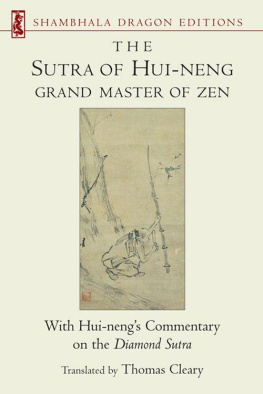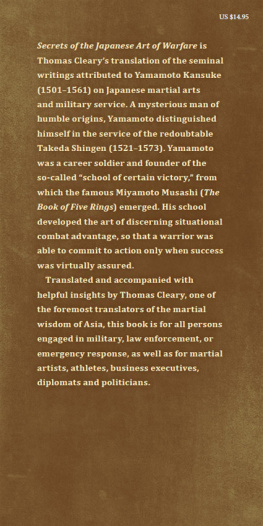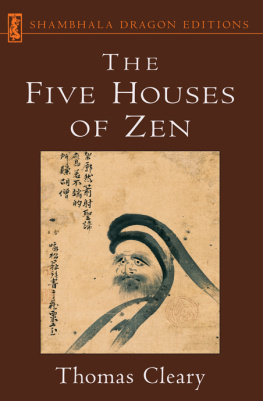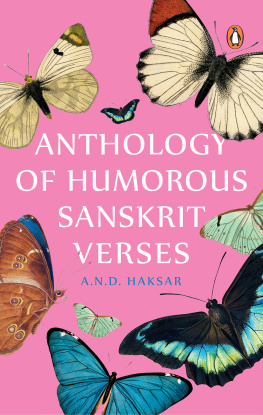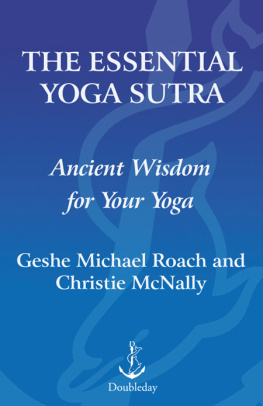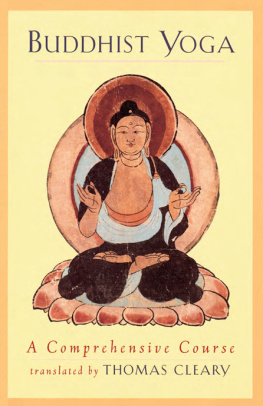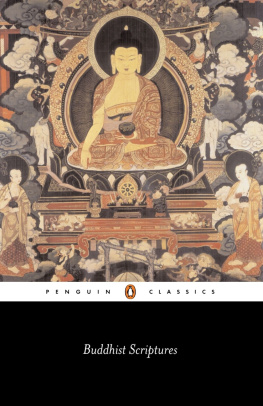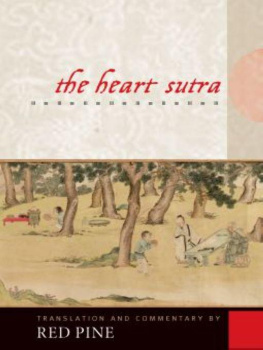Thomas Cleary - The Lankavatara Sutra
Here you can read online Thomas Cleary - The Lankavatara Sutra full text of the book (entire story) in english for free. Download pdf and epub, get meaning, cover and reviews about this ebook. year: 2012, genre: Religion. Description of the work, (preface) as well as reviews are available. Best literature library LitArk.com created for fans of good reading and offers a wide selection of genres:
Romance novel
Science fiction
Adventure
Detective
Science
History
Home and family
Prose
Art
Politics
Computer
Non-fiction
Religion
Business
Children
Humor
Choose a favorite category and find really read worthwhile books. Enjoy immersion in the world of imagination, feel the emotions of the characters or learn something new for yourself, make an fascinating discovery.

- Book:The Lankavatara Sutra
- Author:
- Genre:
- Year:2012
- Rating:4 / 5
- Favourites:Add to favourites
- Your mark:
- 80
- 1
- 2
- 3
- 4
- 5
The Lankavatara Sutra: summary, description and annotation
We offer to read an annotation, description, summary or preface (depends on what the author of the book "The Lankavatara Sutra" wrote himself). If you haven't found the necessary information about the book — write in the comments, we will try to find it.
The Lankavatara Sutra — read online for free the complete book (whole text) full work
Below is the text of the book, divided by pages. System saving the place of the last page read, allows you to conveniently read the book "The Lankavatara Sutra" online for free, without having to search again every time where you left off. Put a bookmark, and you can go to the page where you finished reading at any time.
Font size:
Interval:
Bookmark:
Lankavatara Sutra
The Heart of Buddhism
Translated from the original Sanskrit
By Thomas Cleary
Contents
Translators introduction
Lankavatara Sutra
I. Ravanas Request for Instruction
II. A Collection of All 36,000 Teachings
III. Impermanence
IV. Realization
V. Implications of Eternity or Impermanence of the Realized
VI. The Momentary
VII. Projection
VIII. Meat Eating
IX. Spells
X. Summation in Verse
Glossary
Translators Introduction
The Lankavatara sutra is one of the most significant and most sophisticated of the surviving scriptures of the Sanskrit Buddhist canon. Its full title is Saddharma-Lankavatara-sutra, meaning scripture on the entry of true teaching into Sri Lanka. Of comparatively late composition, it provides keys to contextualization and interpretation of different doctrines and practices of pan-Buddhism, particularly in distinguishing dogmatism from design:
This scripture has multiple meanings to guide recipients of all dispositions, not disputation that is actually contradictory.
The teachings indicated in all the scriptures are appeasements for subjective imaginations of ignorant people, not disputation intended to establish ultimate knowledge as it is in reality. Therefore one should follow meaning, not adherence to the expression of teachings.
The word of the Buddha has no statement.
Ultimate truth is not a statement, nor is ultimate truth what is expressed by a statement.
The leading principle of the goal is distinguished by first-hand experience, beyond speech, imagination, and words, reaching the realm where there is no impulse, the inherent characteristic of arrival at the stage of first-hand realization, excluding all the destructive forces of speculation and dogmatism.
The leading principle of instruction is discerning accommodation to peoples conditions.
The teachings are not literal, and yet Buddhas do not present them for no reason. They present them in consideration of mental construction. Without material to use, instruction in all the teachings would disappear.. The great bodhisattvas should be free of obsession with the articulation of the recital of teaching. The recital of teaching has different meanings on account of the engagement of peoples mentalities.
Just as if someone points out something to someone with a finger, and the latter looks only at the fingertip, in the same way ignorant ordinary people, as if of infantile disposition, will go to their death adhering to the fingertip of meaning as articulated, and will not arrive at the ultimate meaning beyond the fingertip of expression.. Just as the ignorant one fixated on the pointing fingertip does not apprehend the moon, so does one attached to the letter not know my truth.
As a physician prescribes the type of treatment according to the illness, and there is no division in the science but treatment is distinguished by the type of illness, so do I teach the family of beings according to the afflictions with which they are troubled, after having ascertained the powers of beings capacities.
In general, this scripture emphasizes emancipation from deception by understanding of the non-objective character of conditioned subjectivity immersed in acquired habits of thought mistaking cognitive interpretation for external reality:
The occurrence of thought is bound by impressions of imagination; for what is attributed to the world is only mental but appears external to people.
One imagines falsely when thought, intellect, and cognitive consciousness are immersed in the appearance of self-existence of external things.
Cognition with mind tied to objects takes place in thought. Insight, though, operates in the domain of essence without image. Imagined identity imposed on the relative is not really there; the imagined is grasped by confusion; the relative is not imagined.
Taken in fragments, this teaching has historically been confused with subjective idealism, or interpreted to deny the reality of the external world, or to say that nothing exists. Chan Buddhist classics make a particular point of demonstrating the error of this type of exaggeration, in part because Chinese translations of the Lankavatara do not distinguish certain critical Sanskrit terms and thus are more prone to misinterpretation. The original scripture rigorously rejects nihilism and does not ultimately deny either self or world:
A square is established; how could it be, if there is no form? If there is no inside and outside, consciousness does not operate.
Beans dont sprout from sesame seed, rice does not produce barley, wheat and corn are of different kinds.
A totality of conditions starts and stops; no separate existent is born or passes away from the totality. There is no separate existence at all relative to the totality as a unity, singly, as imagined by philosophers.
Though form is there, there is no vision in the formless realm. Its absence is not the aim, nor the vehicle, nor the journey.
The inherent formation of matter is due to conditions, without a true state; the supreme ultimate existence, Brahma, I say is this matter.
Confused thinkers without guidance are in a cave of consciousness running hither and thither seeking to explain the self. The pure self has to be realized first hand; that is the matrix of realization, inaccessible to speculative thinkers.
If there is no self, how can phenomena such as illusion be or not be?
The mind is naturally shining; intellect and so on are otherwisethe actions accumulated by them are why they both are afflicted. The shining self is defiled by adventitious afflictions without beginning, and when in that condition is cleaned like a garment. Just as clothing, or gold, freed of defect by absence of impurity, does not disappear but remains, likewise the self without faults.
This explanation of self, standing out like the blaze at the end of an eon, outshines the forest-fire of selflessness, freed from the faults of dogma.
The Lankavatara sutra was composed in a time known for developments in mathematics, astronomy, logic, philosophy, religion, and law. Conscious of this, the scripture uses associated categories of thought to turn human consciousness on itself. Early on in the discourse the scripture indirectly illustrates its central concern by posing unanswered questions designed to draw attention to relativity and context in definitions, structures, measures, and measurement. The scripture also plays with a complex multiplicity of meanings for one and zero to show the many roles that underlying attitudes of affirmation and denial may play in the formation of consciousness, social organization, cultural development, and their relation to each other and the material world.
The scripture applies the same analysis to mental states and phenomena associated with meditation and mysticism. This is often addressed to yogis and Buddhist hearers, or followers of the lesser path leading to individual nirvana: Extinction of perception and sense is not suitable for transcending the conditions of subjective mental objects, because of being mental content. To yogis, the scripture describes those who elicit super-knowledges seeking godhood, as ignorant, and for Buddhists it differentiates practitioners of Mahayana or Great Vehicle Buddhism from the hearers who are seekers of nirvana for their own pleasure. Buddha declares, I do not attain nirvana by a thing, an act, or a form; I attain nirvana when consciousness grounded in false imagination ceases. On its account, having seized on it, connected to the course of the intellect, it gives rise to thought and fixated consciousness.
The habit of propitiating deities for personal or political profit, resurgent in the era of the scriptures composition, is also attributed by this analysis to exploitation of the influence of suggestion: The materialist inspiration of various formulas deludes the unenlightened by various expressions of purpose. It is not reasonable, or beneficial, yet he teaches any nonsensical prattle whatever; for this reason it is called the inspiration of sundry spells of the materialist.
Next pageFont size:
Interval:
Bookmark:
Similar books «The Lankavatara Sutra»
Look at similar books to The Lankavatara Sutra. We have selected literature similar in name and meaning in the hope of providing readers with more options to find new, interesting, not yet read works.
Discussion, reviews of the book The Lankavatara Sutra and just readers' own opinions. Leave your comments, write what you think about the work, its meaning or the main characters. Specify what exactly you liked and what you didn't like, and why you think so.

